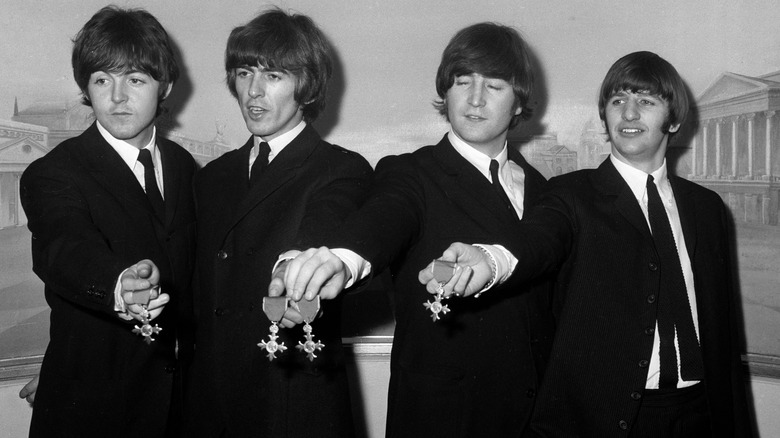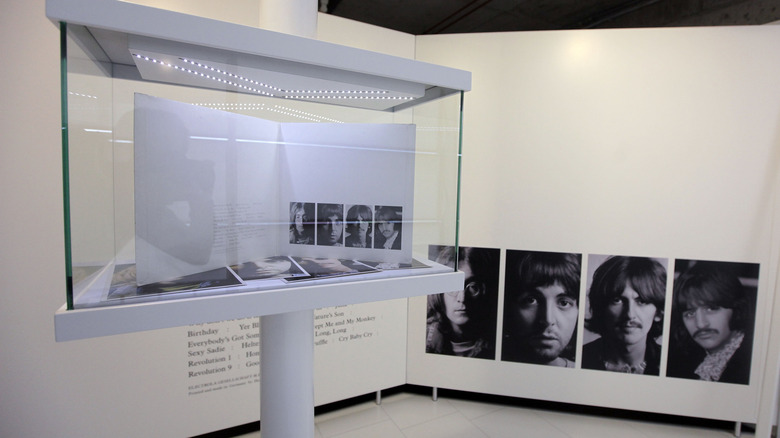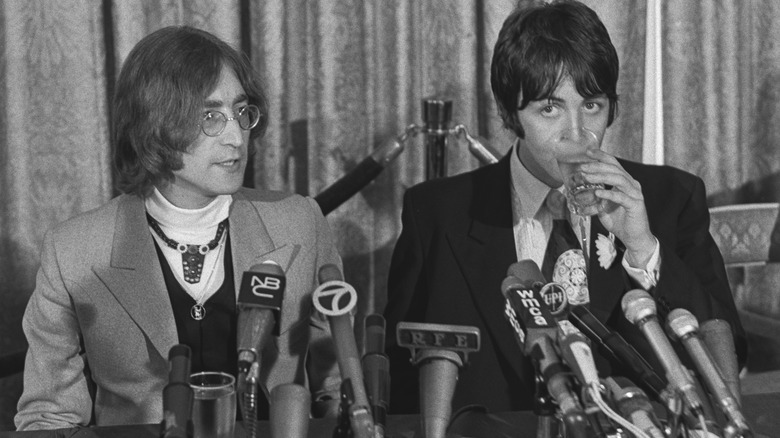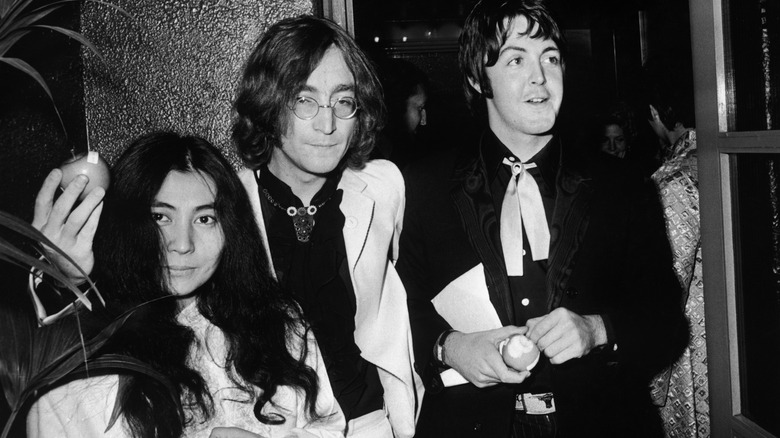Out Of Every Beatles Album, One Stands Above The Rest
Honestly speaking, is there really a Beatles album that can be considered bad? Of course, taste is completely subjective, and one fan's favorite album could rank near, or at the bottom on another fan's list, or vice versa. But it can be said that the Fab Four are among a handful of bands who don't have any true clunkers in their catalog. Whether you're a fan of their earlier, poppier, and more wholesome albums, their mid-period moves toward psychedelia, or their late-era penchant for experimentation and sub-genre-hopping, there's something for everyone in the Beatles' discography.
That all said, there has to be one out of the Beatles' 13 studio albums that stands out from the rest. Regardless of the performer(s) behind them, albums can fit this bill for different reasons, including, but not limited to record sales, influence on other musicians, number of covers from other artists, or, in this era of Spotify and YouTube, streaming statistics and views. For the Beatles, this particular album has gotten widespread critical praise and is chock-full of memorable tracks. But since that could apply to most of the Beatles' work, the album in question stands out in various other ways. Which album is this, and why is it so special?
The White Album is the Beatles' biggest-selling release, per RIAA stats
WIth a whopping 30 songs in total and a kaleidoscope of musical styles explored, the Beatles' 1968 self-titled double album, aka the "White Album," is arguably the Fab Four's most ambitious project. And while the band didn't release any singles from either volume of the "White Album" (via BBC), it also happens to be the Beatles' all-time best-selling album based on Recording Industry Association of America (RIAA) data. According to Business Insider, the "White Album" sold 24 million certified units as of September 2020, putting it right behind albums from AC/DC, Michael Jackson, and the Eagles.
Interestingly, there is a bit of a caveat to this lofty ranking for the "White Album." As explained by Forbes, when it comes to double albums, RIAA counts their sales as two units instead of one. That means the "White Album" would not be the Beatles' best-selling release if both volumes were counted as one — that honor, instead, would go to the greatest-hits compilation "1967-1970," which has sold around 17 million copies, putting it 18th on the RIAA's list. But even with that in mind, you're talking huge sales figures for a release with about 30 songs, many of which are well-regarded among Beatles fans. That brings us to the next reason why the "White Album" stands out ...
The White Album is a mishmash of styles and themes ... and that's not a bad thing
As we briefly mentioned above, the "White Album" is notable for all the different musical styles the Beatles highlighted on its many tracks. There is debatably some filler ("Wild Honey Pie," anyone?), and the highly experimental sound collage known as "Revolution 9" is an acquired taste. But for the most part, the Fab Four took all those styles and added their own signature touch to them, from the Beach Boys pastiche "Back in the U.S.S.R." to the proto-metal "Helter Skelter" and "Happiness is a Warm Gun" to the old-timey music hall-inspired tunes "Martha My Dear" and "Honey Pie." (Not to be confused with the aforementioned "wild" variety.)
Lyrically, the songs likewise ran the gamut of topics from happy to sad and serious to comical. "Glass Onion," meanwhile, was the Beatles' way of sticking it to fans who read too much into their lyrics (via The Independent), packed wall-to-wall with references to previous songs. And let's not forget "Why Don't We Do It in the Road?," which was apparently inspired by the sight of two monkeys, well, doing it in the road while the Beatles were on a spiritual retreat in India. You're welcome.
BBC summed it up quite well in its highly positive review of "The White Album," writing that it was "the first major release to deploy incoherence as a deliberate artistic strategy." That worked out in the Beatles' favor, but there was a reason behind all that ostensible incoherence.
The recording process was marred by infighting and a lack of teamwork
Lastly, the "White Album" deserves to be mentioned ahead of other Beatles records because of how it was created amid so much turmoil within the band. As explained by Louder, when all four Beatles reconvened at Abbey Road Studios in May 1968 to make the double album, things weren't how they used to be. Instead of four men working as a team to create the best possible songs, as was the case with the Beatles' previous releases, John, Paul, George, and Ringo were mostly doing their own thing. And that led to some serious infighting within the band.
During the "White Album" sessions, John Lennon's escalating heroin use resulted in disagreements with his bandmates; this allegedly made him even more temperamental behind the scenes. He and Paul McCartney, in particular, were beefing over musical direction, with Lennon so insistent on the inclusion of the cacophonous, eight-minute-long "Revolution 9" and McCartney balancing the weirdness out with what John called "granny music s***." George Harrison felt frustrated and patronized over his songs playing second fiddle to the Lennon-McCartney compositions. And the normally easy-going Ringo Starr walked out of the sessions, feeling "unloved" and unhappy with his playing, as he later recalled — he eventually returned, but during his absence, it was Macca taking over on drums on "Back in the U.S.S.R" and "Dear Prudence," per Ultimate Classic Rock.
Most other bands probably would have abandoned the whole project and/or disbanded soon after, but the Fab Four toughed it out, and ended up with something many people, to this day, still consider a masterpiece.



